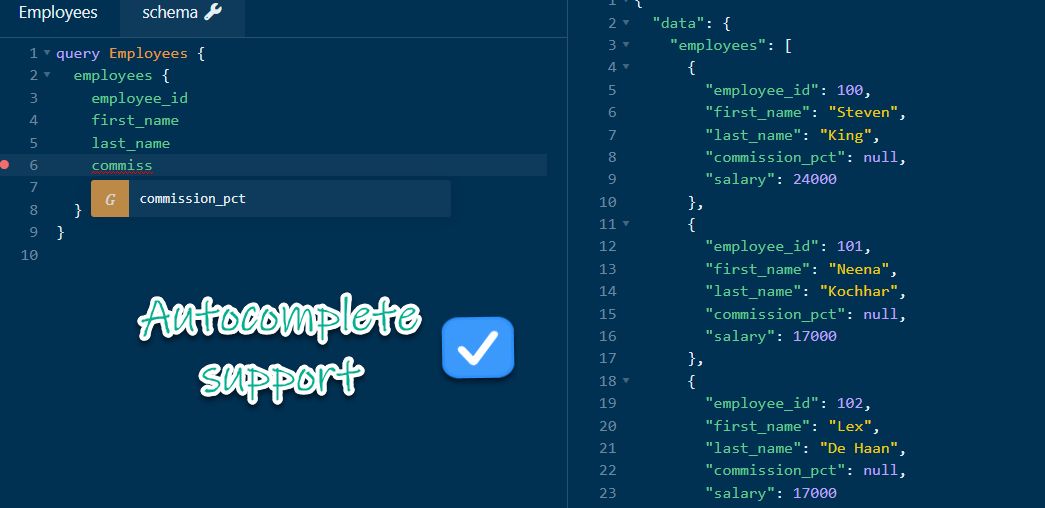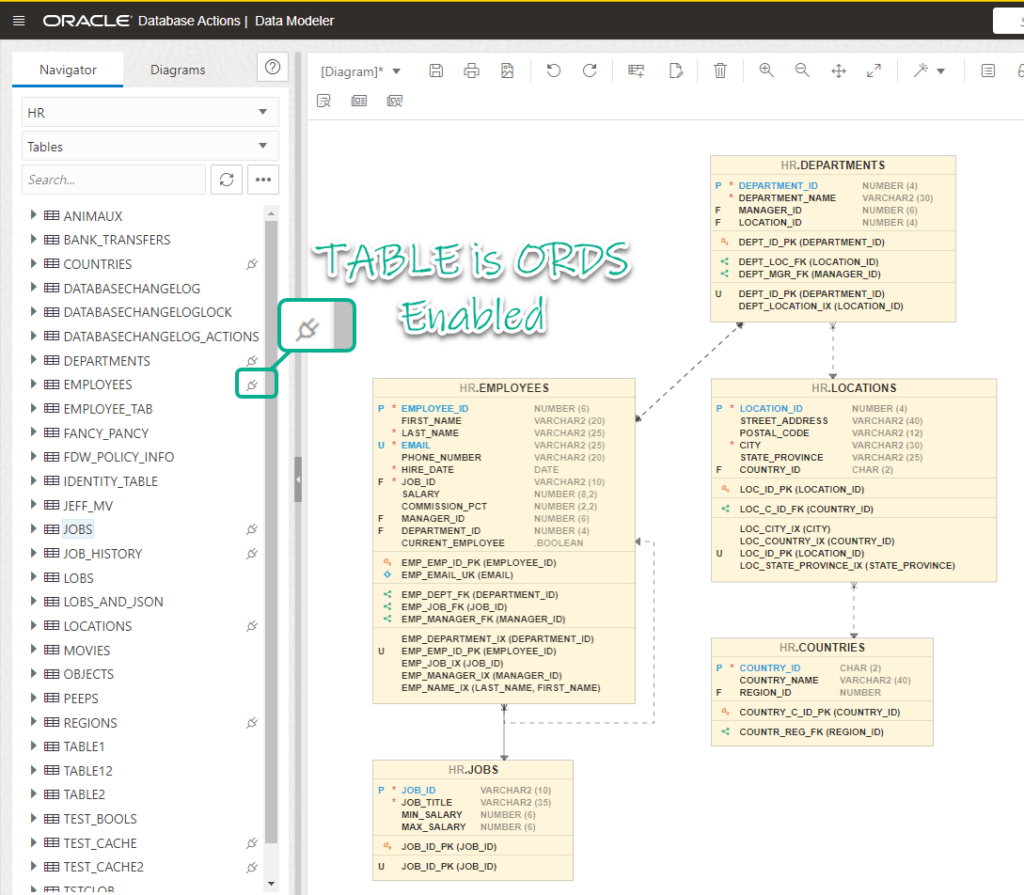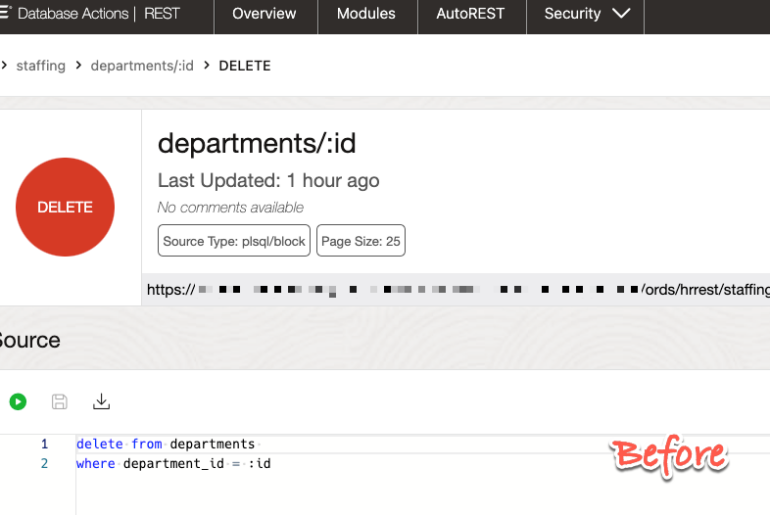We made a pretty big announcement that GraphQL Query support was coming to Oracle REST Data Services 2 weeks ago, here is that post.
Requirements to make this ‘go’
- ORDS 23.3 or higher
- GraalVM 17 + JavaScript support
- ORDS enabled schema and 1 or more enabled tables and views
GraphiQL or API Client?
The GraphiQL interface is probably pretty familiar to those that have used GraphQL before, and it’s behavior for Oracle Database should be pretty familiar.
ORDS Endpoint for GraphiQL:
http://server:port/ords/schema/_/graphiql/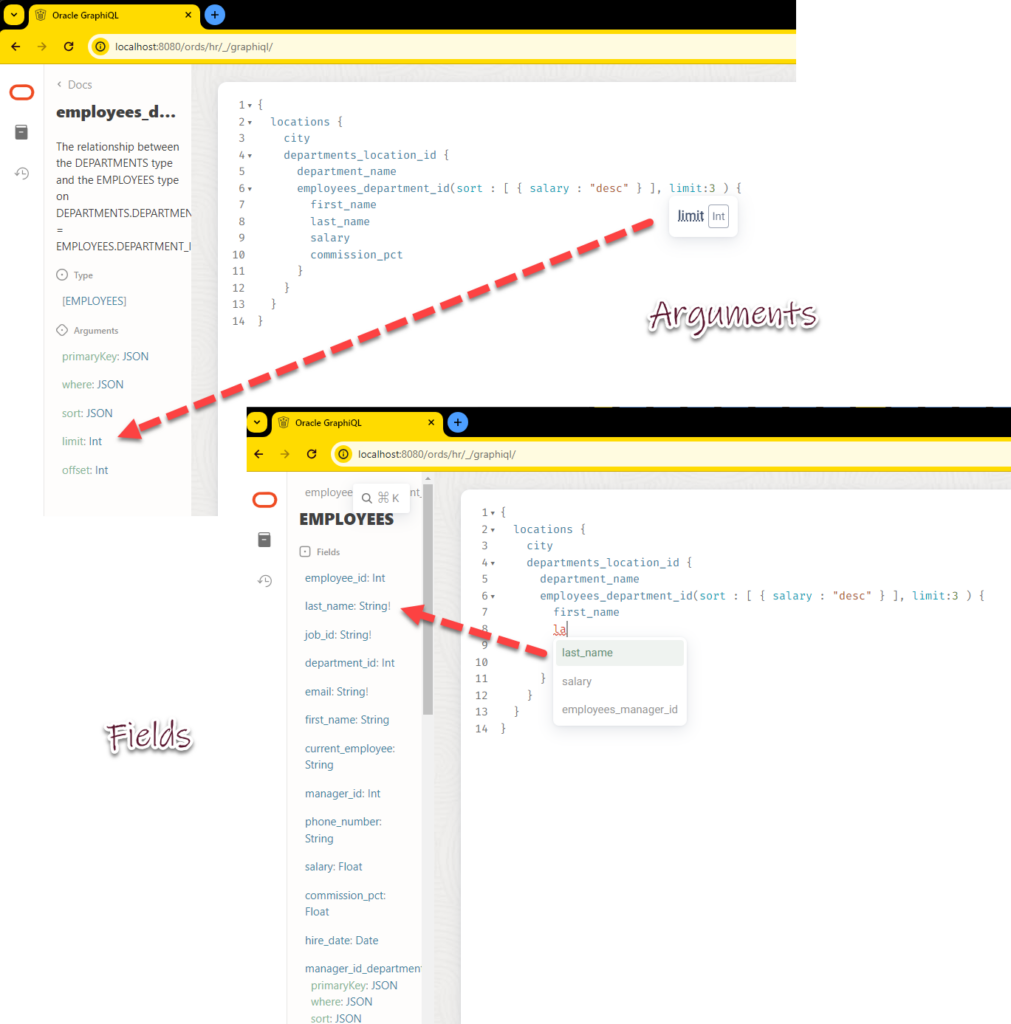
But developers using API tools might also be pretty familiar with something like Insomnia. It’s an open source project and also supports GraphQL!
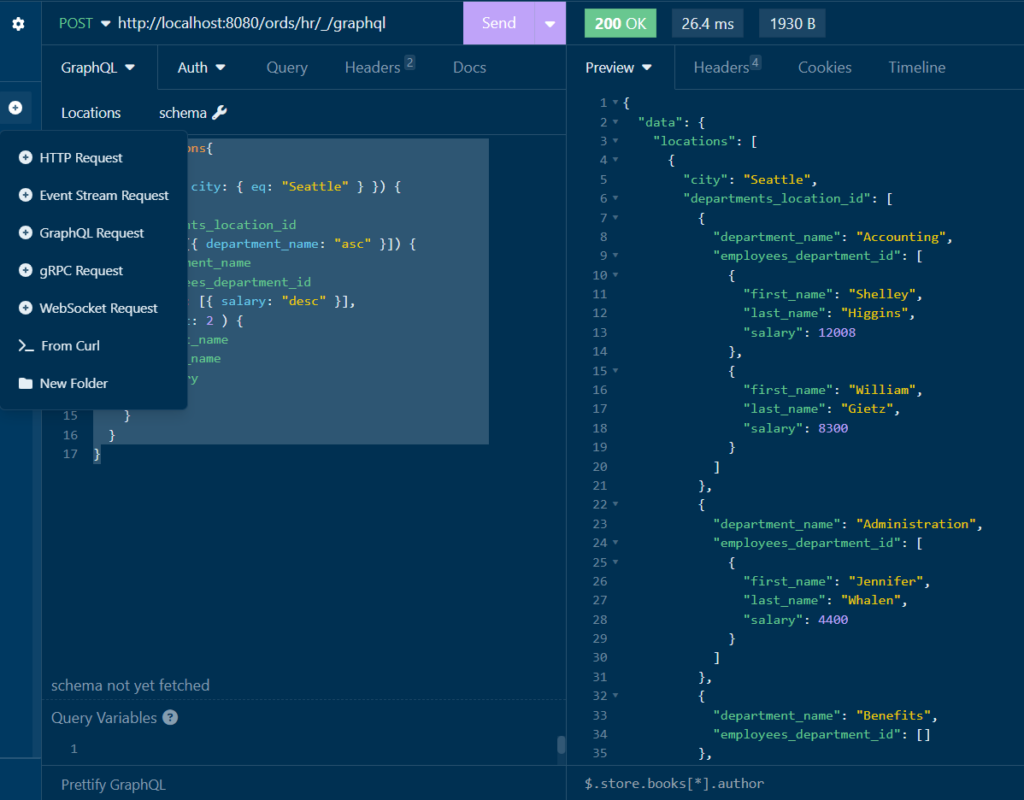
I’m going to show just a few examples of querying our data in more detail, and I’ll be using Insomnia.
Walking Examples from the Docs
The ORDS Examples for GraphQL requests can be found here.
They assume you have an HR schema, that’s ORDS enabled and also has the following tables enabled –
- employees
- departments
- locations
- jobs
- countries
With access to these data structures granted to the ORDS mid-tier, developers can now start exercising those endpoints, in this case the GraphQL query endpoint.
ORDS Endpoint for GraphQL Requests:
POST http://server:port/ords/schema/_/graphqlGetting data from a single resource, table
How about our EMPLOYEES, their names and money details.
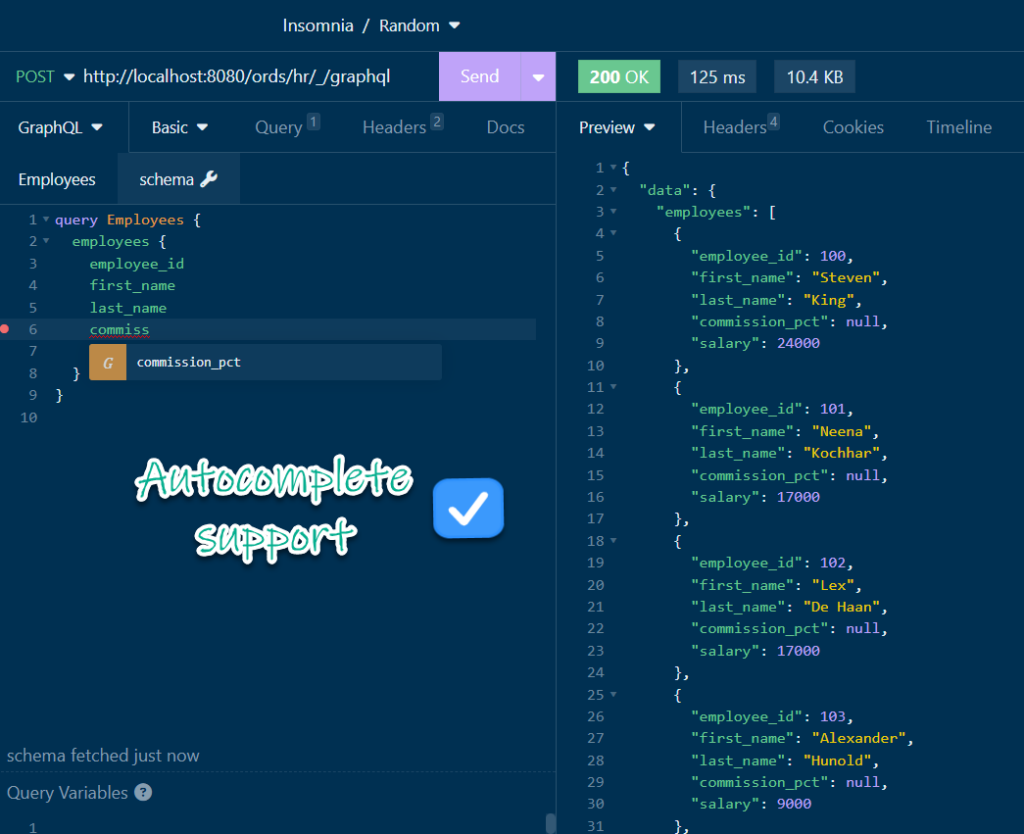
The request looks like this –
query Employees {
employees {
employee_id
first_name
last_name
commission_pct
salary
}
}There’s not much of interest here other than the fact that this is a simple GraphQL query on our EMPLOYEES table.
Getting data from a single resource, filtered
Maybe we don’t want ALL the employees, maybe we just want those employees that, have a JOB_ID of ‘IT_PROG’
query{
employees (where : {job_id : {eq : "IT_PROG"}}){
employee_id
first_name
last_name
salary
job_id
}
}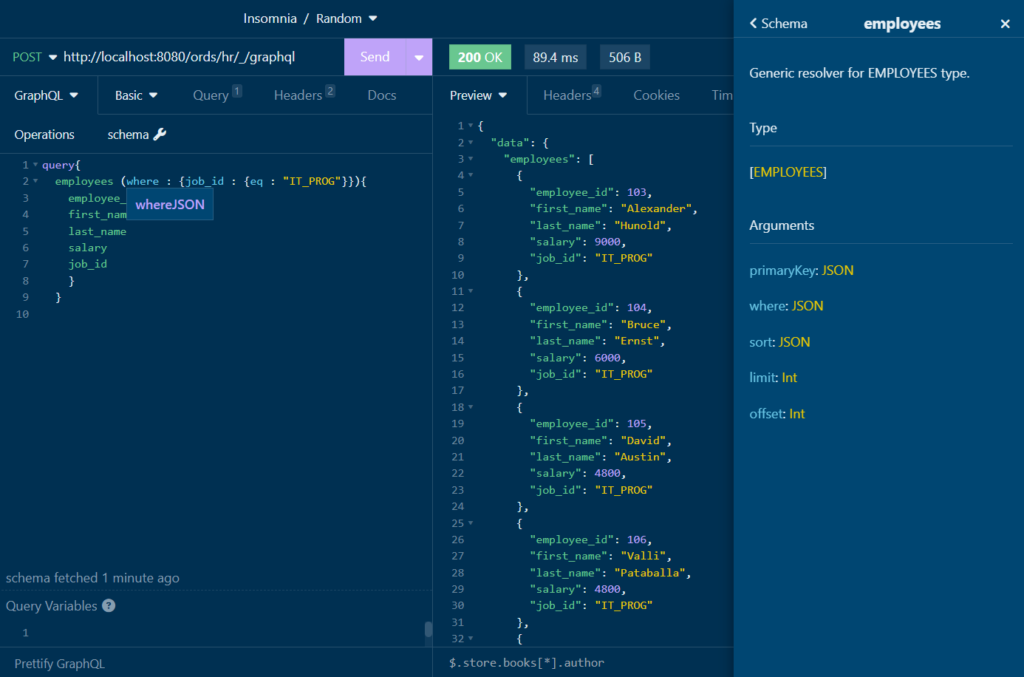
Getting data from a single resource, filtered & sorted
Let’s get that same list of employees, but now let’s sort it by FIRST_NAME descending order, and we’ll get PU_CLERK’s this time.
query {
employees(
where: { job_id: { eq: "PU_CLERK" } }
sort: [{ first_name: "desc" }]
) {
employee_id
first_name
last_name
salary
job_id
}
}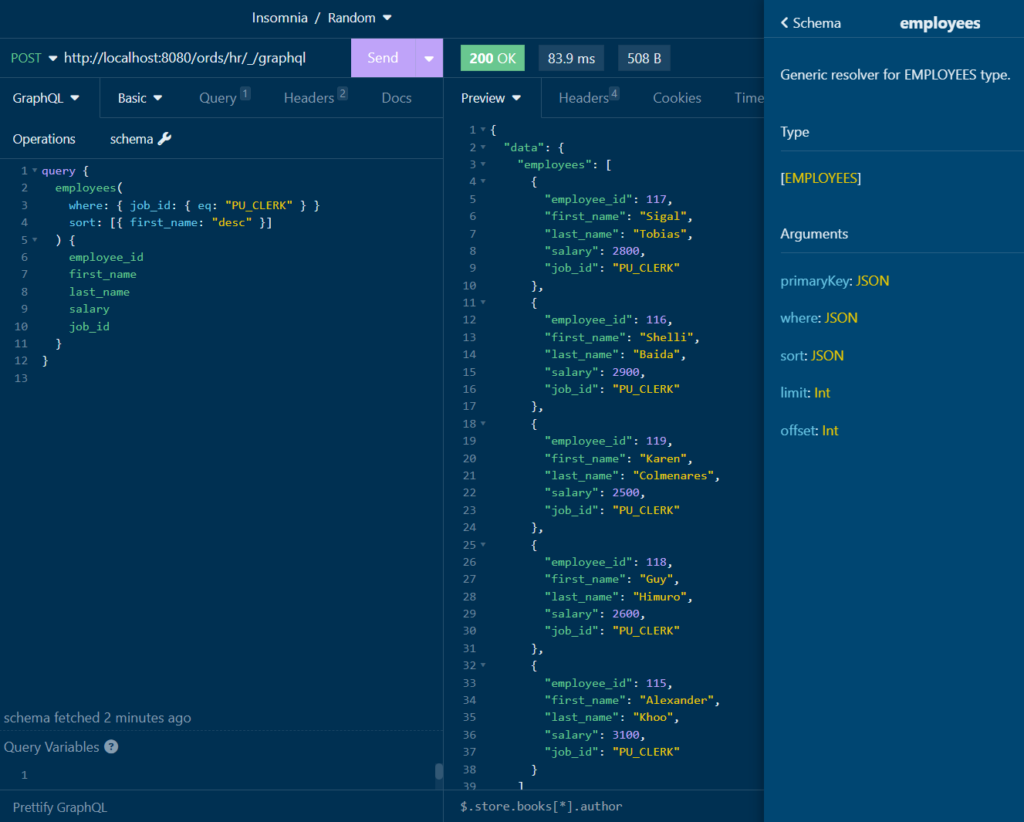
Now let’s do some JOINs
We’ll JOIN employees to itself, via the circular reference for the manager attribute pointing back to the employees table on the employee ID field.
This one starts our normal, we wants stuff from employees, but then after ‘salary,’ we have ‘manager_id_employees.’ This tells the GraphQL query engine that we’re going to traverse the employee record to another employee record, and for THAT employee, we want their name and JOB_ID.
query Employees {
employees {
employee_id
first_name
last_name
salary
manager_id_employees {
first_name
last_name
job_id
}
}
}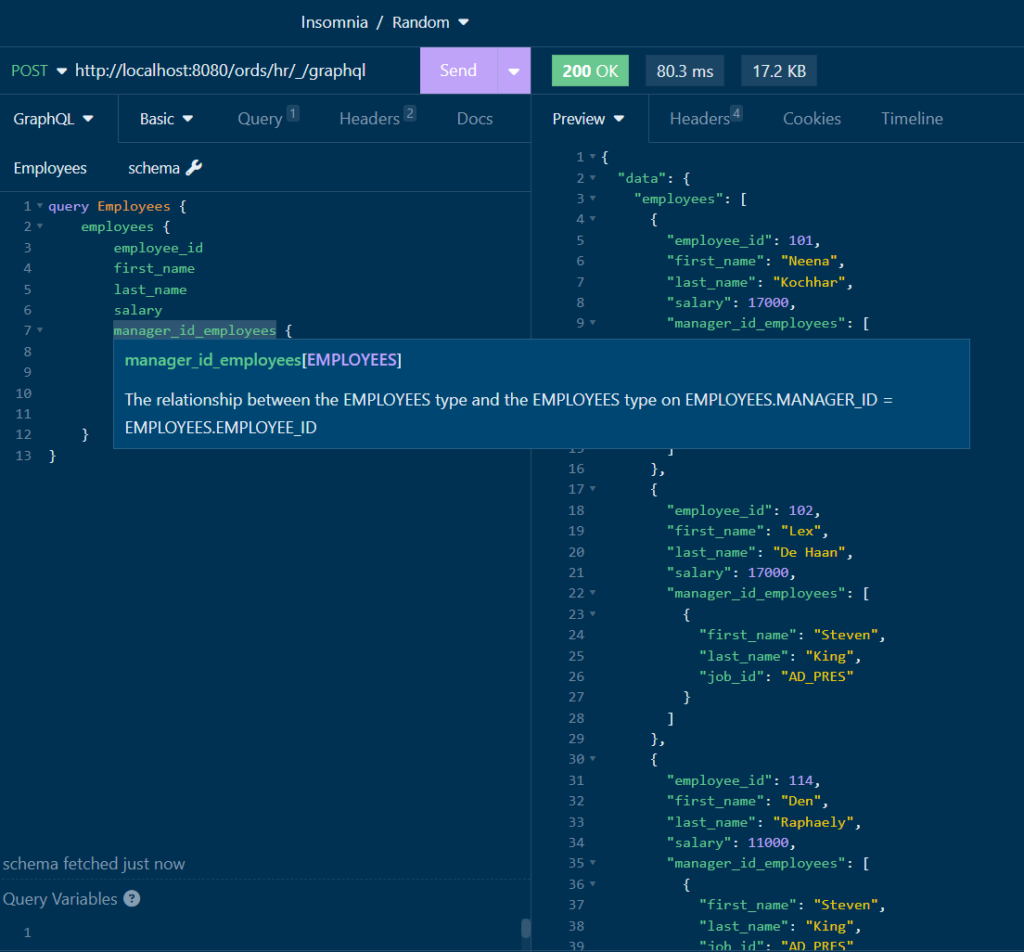
These known relationships are listed here in Insomnia or here in the GraphiQL app.
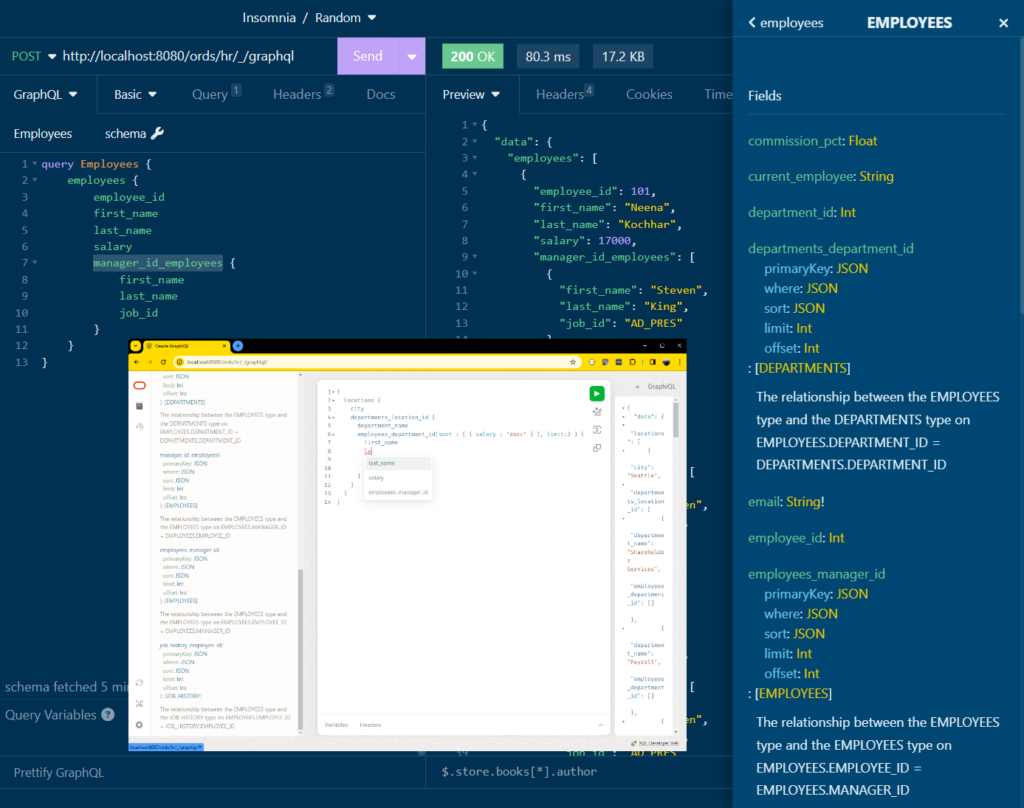
Let’s join some tables and filter and sort
Ok for the City of Seattle, I want a list of departments, sorted in ascending order, and the top 2 highest paid employees.
query Locations{
locations
(where: { city: { eq: "Seattle" } }) {
city
departments_location_id
(sort: [{ department_name: "asc" }]) {
department_name
employees_department_id
(sort: [{ salary: "desc" }],
limit: 2 ) {
first_name
last_name
salary
}
}
}
}And that looks like this –
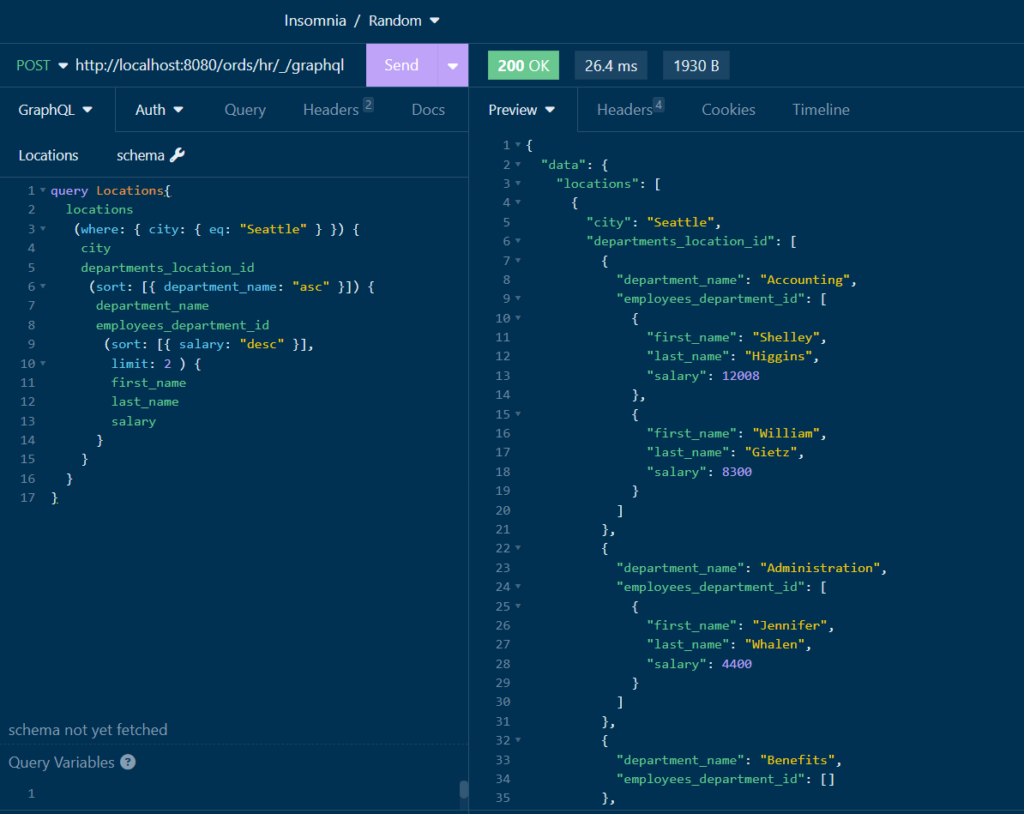
What’s next?
Maybe we can build an app together that takes advantage of this new feature for the Oracle Database!


